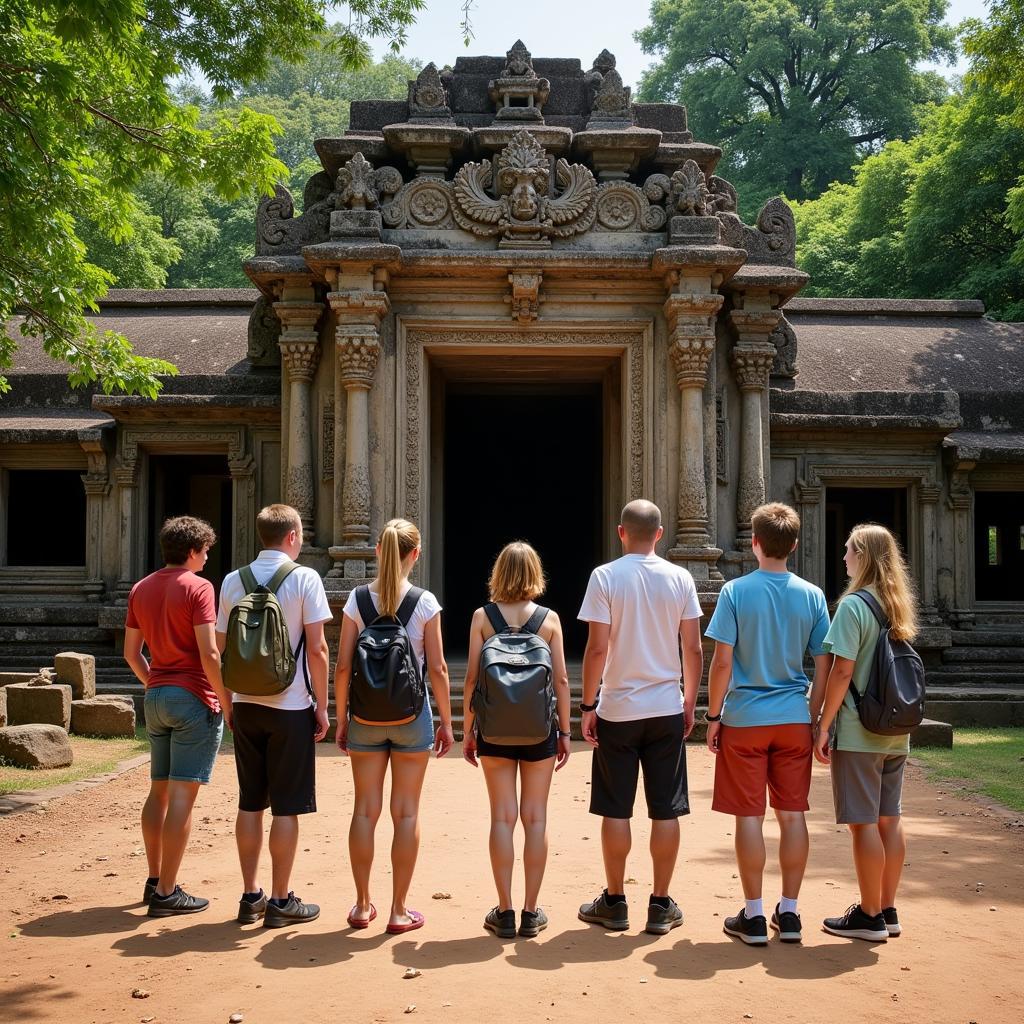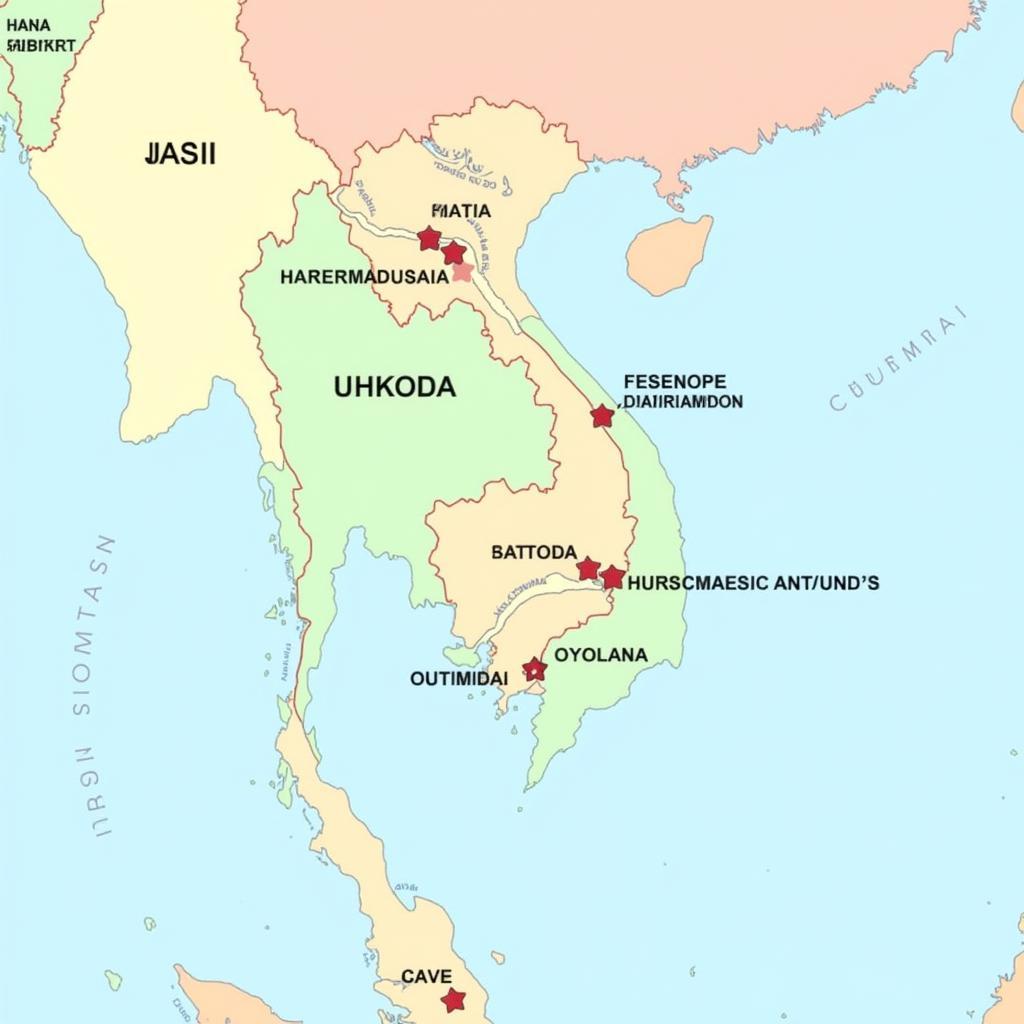The phrase “Asea Bewildered” might seem like a cryptic message, but it perfectly encapsulates the feeling many first-time visitors to Southeast Asia experience. Imagine stepping off a plane into a vibrant tapestry of cultures, languages, and landscapes so diverse it leaves your senses in a delightful frenzy. That’s the allure of Southeast Asia – a region that constantly surprises and challenges your perceptions.
 Travelers Exploring Ancient Temple
Travelers Exploring Ancient Temple
From Bewilderment to Belonging: Embracing the Chaos
It’s perfectly normal to feel “Asea Bewildered.” This feeling stems from the sheer variety that Southeast Asia offers. From the bustling night markets of Bangkok to the serene rice paddies of Vietnam, the region is a melting pot of experiences that can be overwhelming at first. The key is to surrender to the unknown and allow yourself to be swept away by the energy of the place.
One of the first things you’ll notice is the incredible linguistic diversity. While English is widely spoken, especially in tourist areas, venturing off the beaten path can lead you to encounters with local languages like Thai, Vietnamese, Bahasa Indonesia, and Tagalog, to name a few. Don’t let this deter you! A simple smile, a few basic phrases, and a willingness to connect through gestures can go a long way in bridging the communication gap.
Navigating the Cultural Labyrinth
Beyond language, Southeast Asia is a tapestry woven with threads of ancient traditions, religious practices, and social customs. Understanding and respecting these cultural nuances is crucial to making the most of your journey.
For instance, removing your shoes before entering temples and homes is a common sign of respect, while a simple wai (a slight bow with palms pressed together) in Thailand goes a long way in expressing gratitude or greeting someone. Remember, what might be considered polite in one country could be perceived as rude in another. A little research and observation can help you navigate these cultural intricacies with grace.
Finding Your Footing: Tips for First-Time Travelers
Feeling a little overwhelmed? Here are a few tips to help you transition from “Asea Bewildered” to “Asea Adventurer”:
- Embrace the unexpected: Southeast Asia is full of surprises. Go with the flow, be open to new experiences, and don’t be afraid to step outside your comfort zone.
- Pack your patience: Things move at a different pace in Southeast Asia. Embrace the slower rhythm and allow yourself time to soak it all in.
- Connect with locals: The people of Southeast Asia are known for their warmth and hospitality. Take the time to interact with locals, even if it’s just a simple exchange of smiles.
- Bargain with a smile: Haggling is part of the fun in Southeast Asia, especially in local markets. Approach it as a friendly game, be respectful, and don’t be afraid to walk away if you’re not comfortable with the price.
From Bewilderment to Wonder: Embracing the Journey
Remember, the initial feeling of “Asea Bewildered” is just the beginning of an extraordinary adventure. It’s a sign that you’re opening yourself up to a world of new possibilities. Embrace the unknown, learn from every experience, and allow Southeast Asia to captivate your senses. You might just find yourself leaving a piece of your heart in this enchanting corner of the world.
Frequently Asked Questions
1. Is Southeast Asia safe for travelers?
Southeast Asia is generally safe for travelers, but it’s essential to exercise caution and common sense. Be aware of your surroundings, keep your valuables secure, and research the specific safety concerns of each destination.
2. What is the best time to visit Southeast Asia?
The best time to visit Southeast Asia varies depending on the country and region. Generally, the dry season (November to April) offers the most favorable weather conditions for exploring.
3. Do I need a visa to travel to Southeast Asia?
Visa requirements vary depending on your nationality and the specific countries you plan to visit. It’s crucial to check the latest visa regulations well in advance of your trip.
4. What currencies are used in Southeast Asia?
Each country in Southeast Asia has its own currency. U.S. dollars are generally accepted, but it’s advisable to exchange money for local currency upon arrival for smaller purchases and local markets.
5. What are some must-try dishes in Southeast Asia?
Southeast Asia is a culinary paradise! Don’t miss out on iconic dishes like Pad Thai (Thailand), Pho (Vietnam), Nasi Lemak (Malaysia), Adobo (Philippines), and Rendang (Indonesia).
Need more assistance in planning your Southeast Asian adventure? Contact us at Phone Number: 0369020373, Email: [email protected], or visit us at our address: Thon Ngoc Lien, Hiep Hoa, Bac Giang, Vietnam. Our dedicated customer support team is available 24/7 to assist you. Explore more insightful articles and resources on our website to discover the hidden gems of Southeast Asia.
